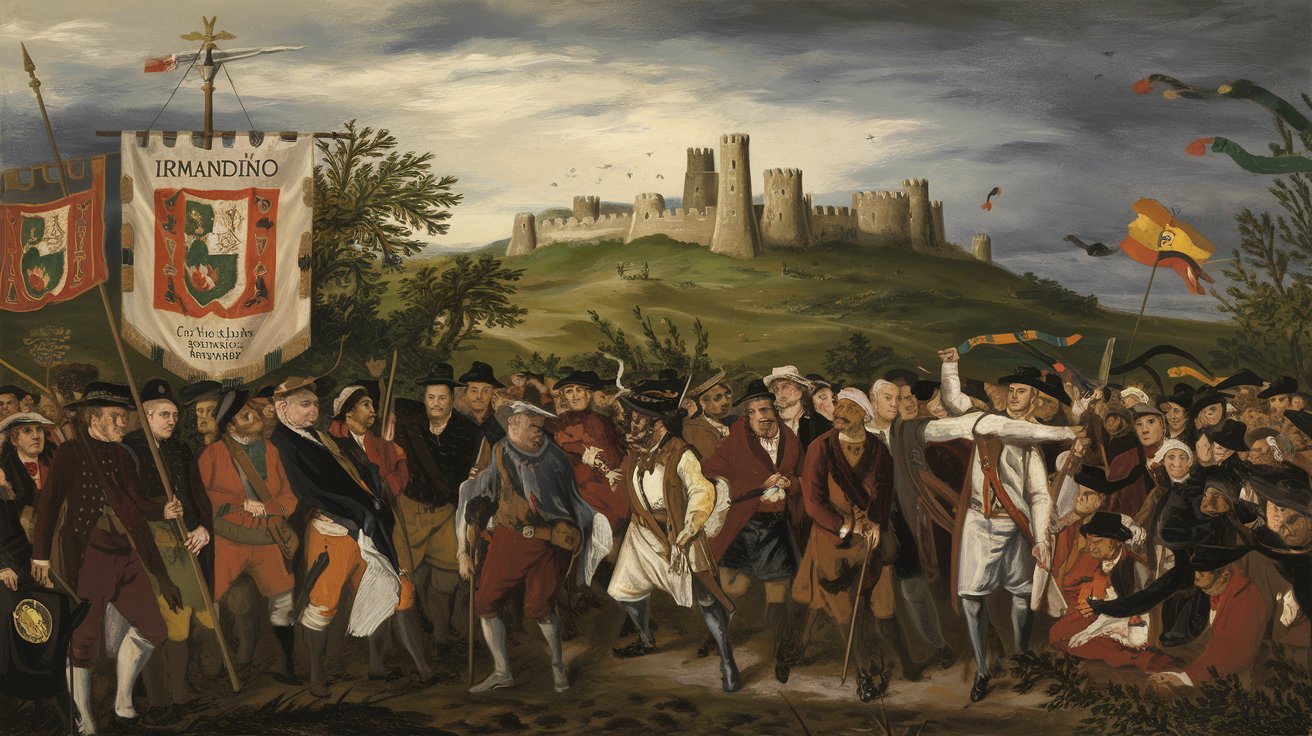
What was the First Irmandiño Revolt? The First Irmandiño Revolt was a significant uprising in Galicia, Spain, during the mid-15th century. Peasants and townsfolk, fed up with oppressive feudal lords, banded together to challenge their authority. This revolt, which took place between 1467 and 1469, saw common people dismantling fortresses and castles, symbols of their oppression. The movement was driven by a desire for justice and better living conditions. Although the rebellion was eventually crushed, it left a lasting impact on Galician society and inspired future uprisings. Understanding this revolt offers a glimpse into the struggles and resilience of medieval communities.
Key Takeaways:
- The First Irmandiño Revolt was a rebellion in 15th century Spain, led by peasants against oppressive nobility. It used guerrilla tactics and inspired future uprisings, leaving a lasting impact on society.
- The revolt weakened noble power, inspired cultural expressions, and contributed to the decline of feudalism in Galicia. It remains a symbol of unity and resilience for the people of Galicia.
The First Irmandiño Revolt: An Overview
The First Irmandiño Revolt was a significant uprising in Galicia, Spain during the 15th century. This rebellion was driven by peasants and townsfolk against the oppressive nobility. Let's dive into some fascinating facts about this historical event.
- The revolt began in 1467 and lasted until 1469.
- It was primarily a response to the harsh treatment and heavy taxation imposed by the nobility.
- The term "Irmandiño" comes from "Irmandade," meaning "brotherhood" in Galician.
- The movement was part of a broader wave of social unrest across Europe during the late Middle Ages.
- The rebels were known for their unity and strong sense of community.
Key Figures and Leadership
Leadership played a crucial role in the success and organization of the First Irmandiño Revolt. Several notable figures emerged as leaders of the movement.
- Roi Xordo was one of the most prominent leaders of the revolt.
- Pedro Osorio, another key figure, was instrumental in rallying the peasants.
- The movement also saw the involvement of local clergy who supported the cause.
- Many leaders were former soldiers who brought military experience to the rebellion.
- Leadership was often decentralized, with various local leaders coordinating efforts.
Tactics and Strategies
The Irmandiños employed various tactics and strategies to challenge the nobility effectively. Their approach was both innovative and resourceful.
- They used guerrilla warfare tactics to surprise and outmaneuver the nobility's forces.
- The rebels destroyed numerous castles and fortresses, symbols of noble power.
- They relied heavily on local knowledge of the terrain to gain advantages.
- The use of psychological warfare, such as spreading rumors, was common.
- Coordination and communication were key, often using secret signals and messengers.
Impact on Society
The First Irmandiño Revolt had a profound impact on Galician society, influencing future generations and shaping the region's history.
- The revolt led to temporary improvements in the lives of peasants and townsfolk.
- It weakened the power of the nobility, at least for a short period.
- The movement inspired future uprisings and resistance against oppression.
- Cultural expressions, such as songs and stories, emerged from the revolt.
- The rebellion highlighted the growing discontent with feudalism in Europe.
Legacy and Historical Significance
The legacy of the First Irmandiño Revolt continues to be felt today. Its historical significance is recognized by scholars and historians.
- The revolt is often studied as an example of early popular resistance.
- It contributed to the eventual decline of feudalism in Galicia.
- The movement is remembered as a symbol of unity and collective action.
- Historical sites related to the revolt attract tourists and history enthusiasts.
- The First Irmandiño Revolt remains a source of pride for many Galicians, symbolizing their enduring spirit and resilience.
The Last Word on First Irmandiño
The First Irmandiño Revolt was a significant event in Galician history. It showed the power of the common people when they united against oppression. The revolt, which took place in the 15th century, was driven by the harsh conditions imposed by the nobility. Despite its eventual failure, the uprising left a lasting impact on the region. It highlighted the struggles of the peasants and their desire for justice. This revolt also paved the way for future rebellions and reforms. Understanding this event helps us appreciate the resilience and determination of those who fought for a better life. The First Irmandiño Revolt remains a powerful reminder of the importance of standing up against injustice. It’s a story of courage, unity, and the unwavering spirit of the people.
Frequently Asked Questions
Was this page helpful?
Our commitment to delivering trustworthy and engaging content is at the heart of what we do. Each fact on our site is contributed by real users like you, bringing a wealth of diverse insights and information. To ensure the highest standards of accuracy and reliability, our dedicated editors meticulously review each submission. This process guarantees that the facts we share are not only fascinating but also credible. Trust in our commitment to quality and authenticity as you explore and learn with us.
